
Volgren is an Australian bus and coach body manufacturer.

The Mercedes-Benz Citaro is a single-decker, rigid or articulated bus manufactured by Mercedes-Benz/EvoBus. Introduced in 1997, the Citaro is available in a range of configurations, and is in widespread use throughout Europe and parts of Asia, with more than 55,000 produced by December 2019.

The Volvo B7RLE is a low-entry single-deck bus chassis manufactured by Volvo. It was superseded by the Volvo B8RLE in 2013.
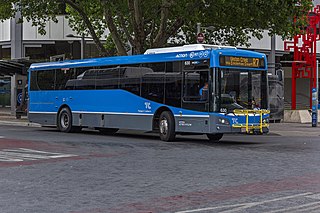
ACTION is a bus operator in Canberra, Australia, and is owned by the Government of the Australian Capital Territory.

The Perth Central Area Transit system, or simply CAT, consists of five bus routes in the centre of Perth and three bus routes in Joondalup. CAT services formerly operated in Fremantle, and similar services exist in Rockingham and Midland. Unlike all other Transperth services, most CAT routes are free.

First Hampshire & Dorset is a bus operator providing services in the counties of Hampshire and Dorset. It is a subsidiary of FirstGroup.
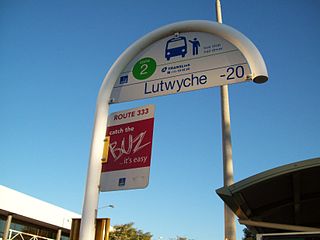
Bus upgrade zones, commonly abbreviated to BUZ, are a feature of Brisbane's public transport system. The name is given to high-frequency bus routes operated by Transport for Brisbane, the Brisbane City Council agency that operates the city's public bus services for Translink. All BUZ services run at least every fifteen minutes from around 6:00am to 11:30pm seven days a week and at least every ten minutes during peak hours from Monday to Friday.
Translink is the public transit agency for Queensland, and is part of the Department of Transport and Main Roads. Translink was first introduced by the Queensland Government in June 2003 to orchestrate bus, ferry, rail and light rail services. They work with Brisbane Airtrain, Transport for Brisbane, RiverCity Ferries, Queensland Rail and other operators to provide services. Translink operates an integrated ticketing system across Queensland and the go card system to allow the use of one ticket on multiple services in South East Queensland.
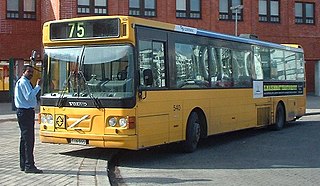
The Volvo B10BLE was a rear-engined low-entry single-decker bus chassis manufactured by Volvo in Sweden between 1993 and 2004. The first prototypes were built in 1992, but mass production started in 1993, only a year after the high-floor B10B. It was popular in Australia, Scandinavia and the United Kingdom. It had the engine mounted on the rear overhang of the bus. It became the successor of the city bus version of the B10B and was used as a base for single-decker buses worldwide. The B10BLE was available in diesel powered format, and later in a compressed natural gas powered format with the fuel tanks on the roof of the bus. Its low-floor design was widely promoted by Volvo when it was first launched, on the basis of added convenience to the passengers, and the increase in transport efficiency due to the low-floor design.

Transport in Brisbane, the capital and largest city of Queensland, Australia, is provided by road, rail, river and bay ferries, footpaths, bike paths, sea and air.

Torrens Transit is an Australian bus service operator in Adelaide. It operates some services as part of the Adelaide Metro network under contract to the Government of South Australia. It is a subsidiary of Transit Systems, which is a part of the Kelsian Group.
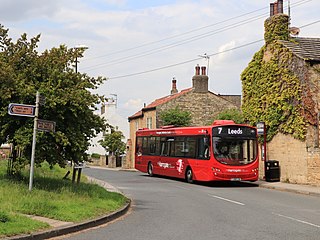
The Harrogate Bus Company operates both local and regional bus services in North Yorkshire and West Yorkshire, England. It is a subsidiary of Transdev Blazefield.

Metro Tasmania, commonly called Metro, a Tasmanian Government business enterprise, is the largest bus operator in the state of Tasmania, Australia, with operations in three of the four largest urban centres of Hobart, Launceston, and Burnie. Urban services in Devonport are provided by a private operator, Kinetic. Services are provided by Metro under a range of urban and non-urban contracts with the Transport Commission, a division within the Department of State Growth.

Stagecoach East is a bus operator providing local and regional services across the East of England, operating in the counties of Bedfordshire and Cambridgeshire. The company is a subsidiary of the Stagecoach Group and is headquartered and registered in Cambridge.

CityGlider is a brand name applied to a pair of high-frequency bus routes operated by Transport for Brisbane in Brisbane, Australia. Both are operated by dedicated fleets of buses vinyled in either blue or maroon liveries with a gliding possum motif. Bus stops serviced by the CityGlider services are identified with signs and painted kerb. Both operate 24 hours a day on Fridays and Saturdays.

The Volvo 7900 is an integrally-constructed single-decker rigid bus and single-decker articulated bus, most commonly available as a hybrid electric bus named Volvo 7900 Hybrid or just Volvo 7900H, but is also available with both diesel and Compressed Natural Gas (CNG) engines in some markets. It is manufactured at Volvo's plant in Poland. It was introduced at Busworld Kortrijk 2011. Based on the Volvo 7900 Hybrid an extension is offered, which i.a. includes a roof-mounted device for occasional loading at stops. The manufacturer assumes that all buses at all end stations and also at some particularly busy stations stay a few minutes until the return or onward journey. As soon as a bus reaches an appropriately equipped stop, a loading unit attached to a pillar at the roadside lowers onto the coupling point mounted on the roof of the bus. The charging process ends as soon as the bus wants to continue or the battery is full. According to the manufacturer, this equipment allows compared to conventional hybrid buses significantly extending the travel time in electric mode and a reduction in fuel consumption. The vehicle and the charging system were first presented to the public in September 2014 at the International Motor Show.
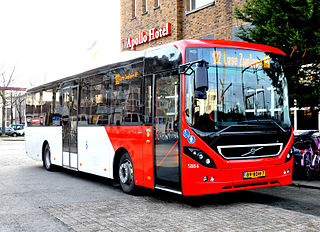
The Volvo B8RLE is a 7.7-litre-engined low-entry bus chassis manufactured by Volvo since 2013 for Euro VI markets. It was designed as a replacement for the B7RLE and the B9RLE. The right-hand drive version was launched in November 2014.

The Alexander Dennis Enviro400 MMC is a low-floor double-decker bus produced by the British bus manufacturer Alexander Dennis since 2014, replacing the Alexander Dennis Enviro400. The Enviro400 MMC is produced at Alexander Dennis' Falkirk and Scarborough factories in the United Kingdom.

Brisbane Metro is a planned high-frequency bus rapid transit system that will service Brisbane, Queensland, Australia. It will consist of two routes that will run through the Brisbane central business district (CBD) every three minutes during peak times (20vph), transporting up to 3,000 passengers per hour in each direction.

Transdev John HollandBuses is a bus operator in Sydney, Australia. A joint venture between Transdev and John Holland, it operates services in Sydney Bus Region 9 in the Eastern Suburbs under contract to Transport for NSW. It is a separate company to Transdev NSW, wholly owned by Transdev, which operates buses in other regions of Sydney.

































